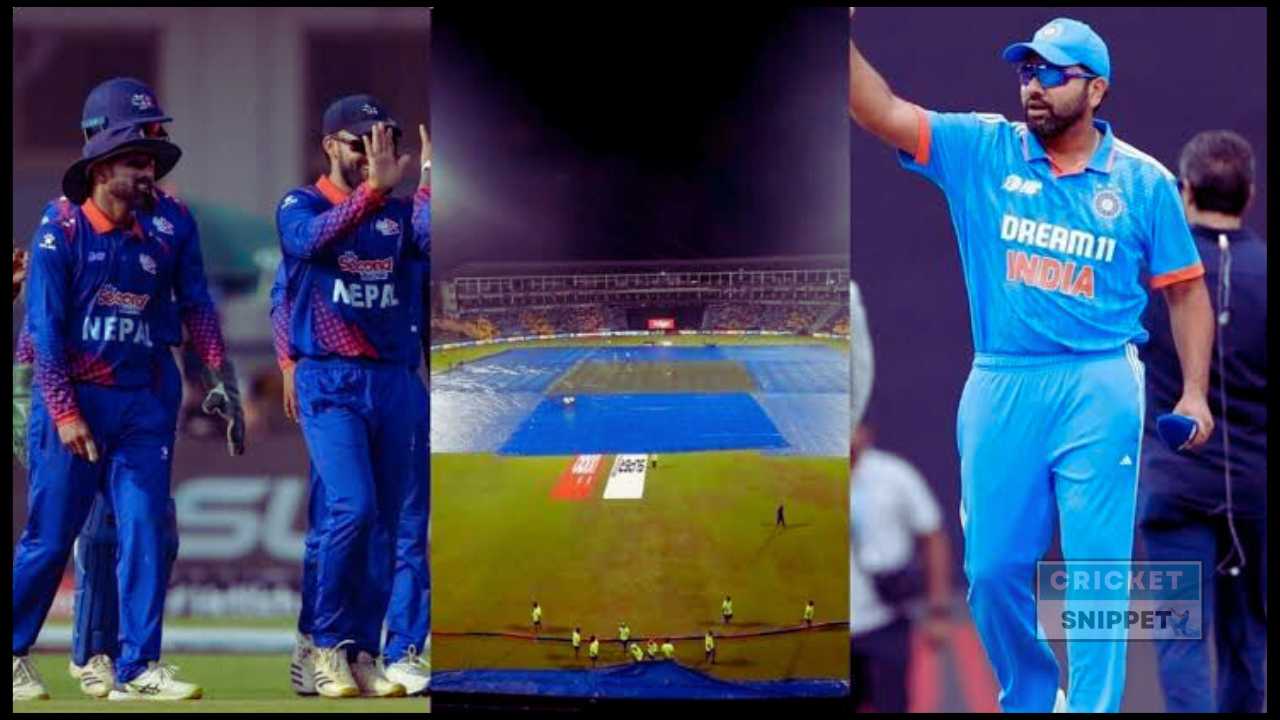[ad_1]
Cricket, renowned for its uncertainties, faces a unique challenge encapsulated in the term “Wash Out In Cricket.” This article aims to unravel the layers of Wash Out In Cricket, examining its historical roots, causes, impact, and the strategies employed to navigate this weather-induced disruption.
Introduction
The term “Wash Out In Cricket” doesn’t involve soap and water but signifies the abandonment of a match due to adverse weather conditions. This article delves into the historical and contextual dimensions of this phenomenon, shedding light on why weather plays a pivotal role in the fate of cricket matches.
Origin of the Term
The roots of the term “Wash Out” can be traced back to the vulnerability of cricket matches played in open fields. As weather conditions became a significant factor, the term emerged, symbolizing the washing away of cricketing action due to the unpredictability of nature.
Causes of Wash Out
Rain, thunderstorms, and adverse weather conditions contribute to a match being washed out. Understanding these factors is crucial, as they determine whether a match can continue or must be abandoned, affecting players, teams, and the overall dynamics of the tournament.

Impact on Players and Teams
The impact of a washout goes beyond player disappointment. Teams invest time and effort in strategic planning, and a washout can disrupt momentum and game plans. This section explores how teams cope with the frustration of an abandoned match and its consequences.
Notable Instances of Wash Out in Cricket
1992 Cricket World Cup Semi-Final: England vs. South Africa
- One of the most memorable instances of matches being affected by adverse weather conditions in the history of cricket took place during the 1992 Cricket World Cup semi-final clash between England and South Africa. Continuous rainfall in Sydney resulted in a reduction in the number of overs, prompting the application of a controversial rain rule that left both teams perplexed. Ultimately, the match was declared a tie, and South Africa progressed to the final based on a superior net run rate.

Weather Conditions
Understanding weather patterns is crucial in managing cricket matches. Advanced weather prediction tools are employed to anticipate disruptions, and organizers must make informed decisions about match continuation or abandonment based on the severity of weather conditions.
Ground Preparation
Cricket grounds are not mere fields; they undergo meticulous preparation to withstand rain. Drainage systems, pitch covers, and ground maintenance play a pivotal role in minimizing the impact of adverse weather on the playing surface.
Technological Advances
Technology has become a valuable ally in managing weather-related disruptions. Weather satellites, radar systems, and predictive analytics empower organizers to make proactive decisions, ensuring the smooth conduct of matches amidst unpredictable weather.
Strategies for Teams
Teams facing the prospect of a washout must recalibrate their strategies. The Duckworth-Lewis-Stern method comes into play, adjusting target scores in rain-affected matches. This section explores how teams adapt to sudden weather changes and reassess their game plans on the fly.

Fan Engagement
Cricket’s charm lies in fan engagement, and a washout can be disheartening for spectators. Organizers leverage social media and interactive platforms to keep fans connected, providing behind-the-scenes content to maintain the excitement despite weather-induced interruptions.
Global Perspectives
Different cricket-playing nations tackle washouts differently, depending on their prevailing weather conditions. While some invest heavily in infrastructure to mitigate disruptions, others face challenges unique to their climate, such as extreme heat or drought.
ICC Regulations
The International Cricket Council (ICC) has established regulations to address the impact of weather on matches. These guidelines ensure fairness and consistency in decision-making, providing a framework for handling washout situations in international cricket.
Impact on Tournament Schedules
A single washout can have a cascading effect on the entire schedule of a cricket tournament. Organizers face the challenge of rescheduling matches, accommodating rain days, and managing logistics to deliver a seamless and competitive event.

Mitigation Measures
Cricket boards and organizers implement various measures to mitigate the impact of washouts. Improved ground covers, efficient drainage systems, proactive decision-making, and flexible scheduling aim to strike a balance between weather unpredictability and the demands of the game.
Conclusion
In the dynamic world of cricket, dealing with washouts is an inevitable challenge. The term “Wash Out In Cricket” may carry disappointment, but it also underscores the resilience and adaptability of the sport. As cricket continues to evolve, proactive measures, technological advancements, and strategic planning will play a crucial role in minimizing the impact of weather-induced disruptions.
[ad_2]
Source link



